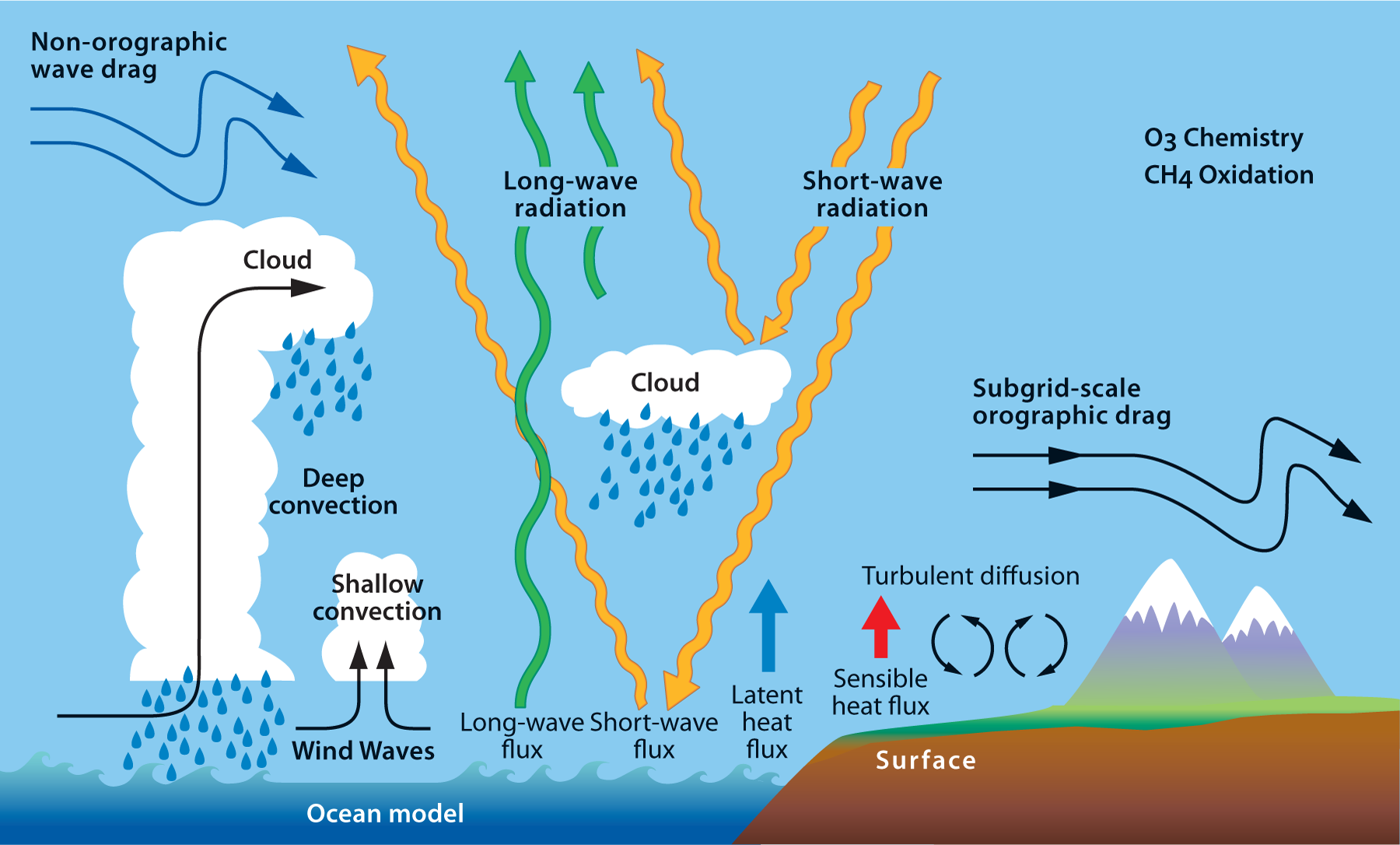Have you ever stopped to think about the sheer power of a thunderstorm, the gentle caress of a summer breeze, or the relentless drive of a blizzard? Each of these weather phenomena is a symphony of energy transformations, a ballet of forces choreographed by the sun’s radiant energy. From the seemingly simple act of water evaporating to the awe-inspiring fury of a hurricane, every physical process in our atmosphere is tightly intertwined with the flow of energy.

Image: lookfordiagnosis.com
Understanding these intricate energy transformations is not only crucial for appreciating the beauty and power of weather patterns but also for preparing for its impacts. Whether it’s predicting extreme weather events or designing strategies for mitigating climate change, our understanding of energy flow in the atmosphere is a cornerstone of our ability to navigate the complexities of our planet’s climate.
The Sun: The Ultimate Source
At the heart of every weather process lies the sun, a colossal nuclear furnace that beams its radiant energy towards Earth. This energy, primarily in the form of visible light and infrared radiation, sets the entire weather machine in motion. When sunlight strikes Earth’s surface, it’s absorbed, transformed, and re-radiated, forming the basis of our planet’s intricate climate system.
Radiant Energy and the Greenhouse Effect
Imagine the Earth as a giant greenhouse. It absorbs solar radiation, warming its surface and atmosphere. But, just like a greenhouse, Earth also traps some of this warmth, preventing it from escaping back into space. This natural phenomenon, known as the greenhouse effect, is driven by gases like carbon dioxide, methane, and water vapor in the atmosphere. These gases act like a blanket, absorbing and re-emitting infrared radiation, keeping the Earth warm enough for life to thrive.
The Role of Convection
As the Earth’s surface warms, it heats the air above it. Warm air, being less dense than cool air, rises, carrying energy upward. This upward movement, called convection, is a fundamental driving force behind many weather patterns. Imagine a pot of boiling water – the rising steam is a visual representation of convection.

Image: www.pinterest.com
Radiation and Conduction: The Transfer of Energy
Convection isn’t the only way energy moves around the atmosphere. Radiation, the transfer of energy through electromagnetic waves, is another critical process. We experience radiation every day, from the warmth of the sun to the heat radiating from a fireplace. Conduction is the transfer of heat through direct contact, like when you touch a hot stove. Both play significant roles in the distribution of energy within the atmosphere.
Condensation and Precipitation: Energy Released
As warm, moist air rises, it cools, and the water vapor it carries condenses, forming clouds. This condensation process releases latent heat, the energy that was stored within the water molecules. This released energy fuels thunderstorms, hurricanes, and other weather events.
The Power of Latent Heat
Latent heat is the energy required to change the state of a substance. It’s like a hidden energy reserve, released when water vapor changes into liquid water, as in condensation. This released energy is why thunderstorms can form so rapidly and why hurricanes can be so destructive.
Precipitation: The Return Cycle
When water vapor condenses into liquid water droplets, it can become heavy enough to fall back to Earth as precipitation. This precipitation, in the form of rain, snow, sleet, or hail, is another key energy transfer mechanism, transferring energy from the atmosphere to the surface.
Winds: Energy in Motion
The uneven heating of the Earth’s surface creates pressure differences in the atmosphere. Air flows from areas of high pressure to areas of low pressure, generating winds. These winds, like massive rivers of air, transport energy, moisture, and heat across the globe, influencing weather patterns and climate.
From Gentle Breezes to Furious Storms
Winds can range from gentle breezes to furious storms. The intensity of these winds is determined by the temperature difference, causing the pressure difference, and the Coriolis effect, a force due to Earth’s rotation, which steers winds to the right in the northern hemisphere and to the left in the southern hemisphere.
The Complex Dance of Energy
Every element of weather—from the sun’s rays to the swirling winds to the crashing thunder—is powered by intricate energy transformations. These processes are not isolated but rather interconnected, forming a continuous cycle of energy exchange.
- The sun’s radiant energy drives the whole system.
- Convection, radiation, and conduction transfer energy throughout the atmosphere and across the globe.
- Condensation and precipitation release latent heat, driving storms.
- Winds transport energy, moisture, and heat across the planet.
Understanding Energy: A Key to Our Future
Understanding the flow of energy within the atmosphere is crucial for comprehending the complexities of weather and climate change. This knowledge is critical for:
- Predicting the future: Accurate weather forecasts are vital for protecting life and property.
- Mitigating climate change: Understanding the role of greenhouse gases and the energy balance is key to developing sustainable solutions.
Every Physical Process Of Weather Is Accompanied By
Expert Insights: Looking Towards the Future
Dr. Sarah Jones, a renowned climate scientist, states, “Climate change is disrupting the energy balance in our atmosphere, leading to more extreme weather events. We need to urgently reduce our dependence on fossil fuels and transition to renewable energy sources to preserve our planet’s delicate energy equilibrium.”
For those seeking to understand and navigate the complexities of weather and climate change, there are many resources available. From reputable climate science organizations to interactive online platforms, information and tools are readily accessible. Let’s learn, engage, and take action to protect our planet’s vital energy balance.





